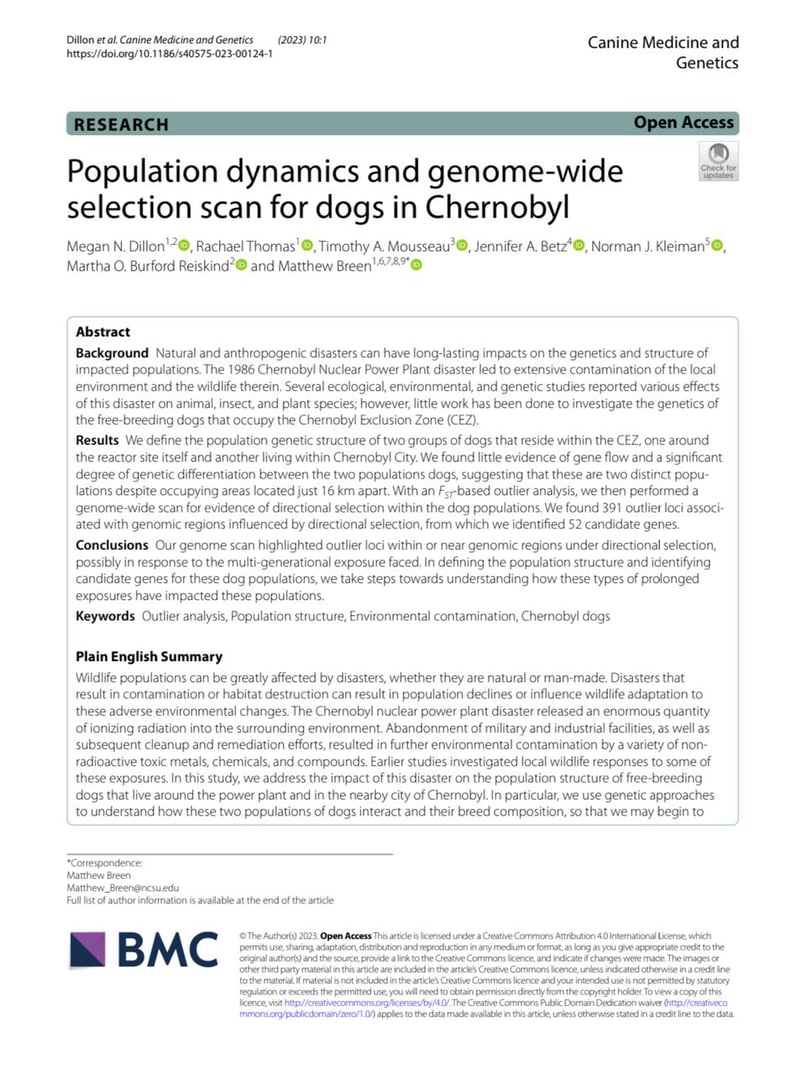Population dynamics and genome‑wide selection scan for dogs in Chernobyl
The Paper of the Day investigates the population genetic structure of free-breeding dogs living within the Chernobyl Exclusion Zone (CEZ), an area greatly affected by the 1986 Chernobyl nuclear disaster. The researchers analyzed genetic data from two groups of dogs - one living around the Chernobyl Nuclear Power Plant (NPP) and another living in Chernobyl City (CC), located about 16 km apart. The two dog populations show a significant degree of genetic differentiation, with little evidence of gene flow between them, despite their close geographic proximity. This suggests the two populations are breeding independently. The NPP population had lower observed and expected heterozygosity compared to the CC population, indicating lower genetic diversity. The NPP population also had longer runs of homozygosity, suggesting higher levels of inbreeding. The genome-wide scan for selection identified over 390 outlier loci potentially under directional selection, near genes involved in processes like DNA repair, immune function, and response to radiation - likely in response to the contaminated environment.


